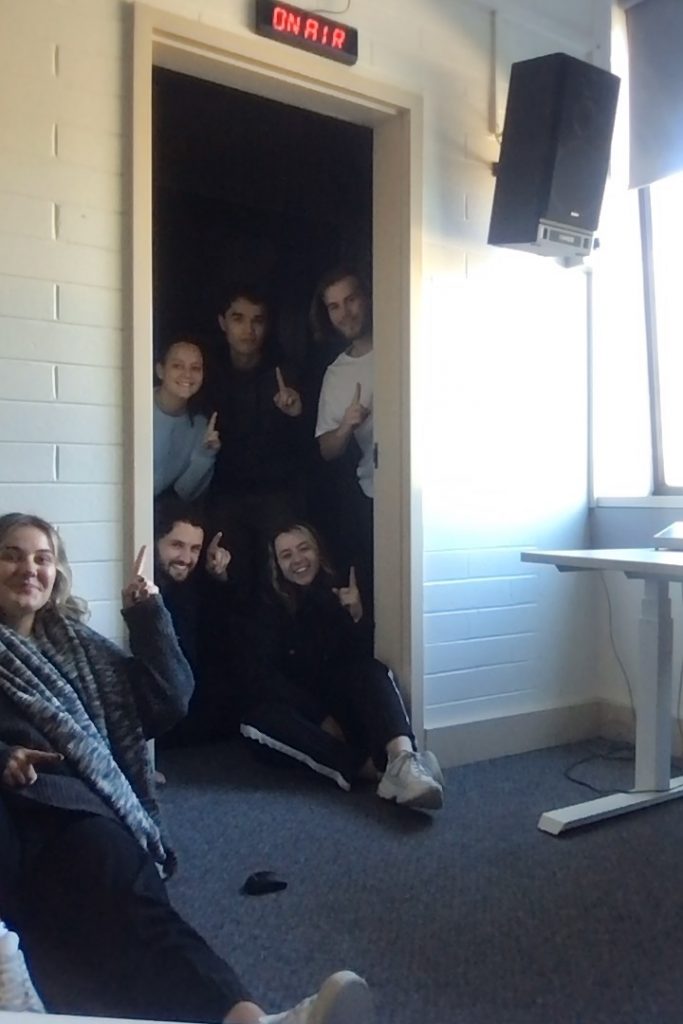Tattoo Culture in the Retail Workplace

The policies of many companies around Canberra specify that employees can not have visible tattoos [ED: but not so much the APS apparently].
Mitch Kendrick is a retail store supervisor and has a firm view of tattoo culture in the workplace when considering job applicants.
“I don’t think a tattoo in itself is going to dictate how an employee is going to perform,” Kendrick says.
“But if the tattoo is a part of an overall persona or an impression I get from an interview with them, for example, I think it may contribute to my judgement.”
While it would be outright discrimination if someone was denied a job opportunity due to having a tattoo, the older cultural association still exists between tattoos and criminality.
In Canberra, large scale companies expect their applicants and current employees to keep any tattoos hidden where possible.
“It’s an understandable requirement … in a society that’s got a whole variety of different views, naturally there’s always going to emerge a social norm or what is considered acceptable and if you’re a large corporation sometimes it is easier or perhaps less risky to limit what your employees can do appearance wise for the sake of the company as a whole in terms of impression and appearance,” says Kendrick.
“If a company appears unprofessional, for a reason like their employees having a lot of tattoos, it’s not necessarily rational, but that perception can sort of pervade the public’s opinion and from a business standpoint that can be significant.”
For employers, their stance on visible tattoos generally does not have anything to do with repressing individuality or creative expression.
“In a professional sense you’re not an individual, you are part of something much larger, so from the company’s point of view it makes perfect sense to ask you to limit certain attitudes or certain displays of yourself to separate you the person from you the employee,” says Kendrick.
“It’s the same reason why companies have uniforms, you’re essentially faceless.”
“The individual part of you is something that is minimised for the sake of providing a uniform experience to the customer,” he continues.
According to research blog, McCrindle, they conducted a survey of 500 ordinary Australians in 2013 and their population sample revealed that 12% of individuals had one or more tattoos. Melissa Morris of Canberra falls under this category.
From previous experience, Morris fears that having a half-sleeve tattoo has the potential to limit her future job opportunities despite currently being employed. She acknowledges that placement is important when it comes to getting a tattoo and considering future employment.
“I think it really could hinder my chances of finding a job depending on what industry I want to go into,” says Morris.
“I took a big risk with doing a half-sleeve.”
When she worked at an unnamed supermarket chain in Canberra, Morris recounts their policy on tattoos.
“Their handbook stated that employees must look neat and tidy at all times,” says Morris.
“Their opinion of neat and tidy is keeping hair short or having it tied back, clean skin, no visible tattoos or piercings.”
“Straight edge, very clean cut. I understand why they want to go for that, but not everybody fits to that social norm,” she continues.
It can be difficult to predict a customer’s reaction when it comes to their stance on tattoos and unfortunately in some scenarios people do react negatively.
“In my old job I’ve had customers react differently to me when they notice I have a tattoo,” says Morris.
“I noticed that older people in particular would see my tattoo and be a little bit taken aback. In some cases, they even refused my help.”
At the end of the day, you are the face of a company and a corporate entity has certain values that must be upheld as a condition of employment. That being said, it should not be the case that people fear limited job opportunities because of their choice to become tattooed, but in the current climate that fear is a reality for some.
Please note that some names have been changed to protect the privacy of the subjects.
Text and images by Leanne Duck.




Be the first to comment!